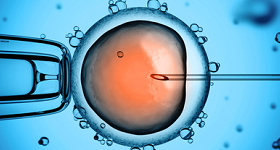The Promise of Stem Cells: A Journey into Regenerative Medicine
What Are Stem Cells?

Stem cells are undifferentiated cells that can divide and differentiate into specialized cell types. They are classified into two main types: embryonic stem cells (ESCs) and adult stem cells.
Embryonic Stem Cells (ESCs): These are derived from embryos and can differentiate into any cell type in the body. They are pluripotent, meaning they can give rise to all cell types.
Adult Stem Cells: Also known as somatic or tissue-specific stem cells, these are found in various tissues and can differentiate into the specific cell types of the tissue they reside in. They are multipotent or sometimes unipotent, meaning they have a more limited differentiation potential compared to ESCs.
Applications in Medicine
Stem cells hold great promise for treating a variety of diseases and conditions, including:
Regenerative Medicine: Stem cells can be used to replace damaged or diseased tissues and organs. For example, they can be used to regenerate heart muscle cells after a heart attack or to replace damaged neurons in neurological disorders like Parkinson's disease.
Drug Discovery and Development: Stem cells can be used to model diseases in the laboratory, allowing researchers to study disease mechanisms and test potential drugs more efficiently.
Understanding Developmental Biology: Studying stem cells can provide insights into how cells differentiate and develop into specialized cell types during embryonic development.

Challenges and Ethical Considerations
While the potential of stem cells is vast, there are also challenges and ethical considerations associated with their use. One major challenge is the risk of tumors, as stem cells have the ability to proliferate rapidly. Additionally, there are ethical concerns regarding the use of embryonic stem cells, as their derivation involves the destruction of human embryos.
Future Directions
Research in stem cell biology is a rapidly evolving field, with new discoveries and advancements being made regularly. Future directions in stem cell research include:
Induced Pluripotent Stem Cells (iPSCs): These are adult cells that have been reprogrammed to an embryonic-like state, allowing them to differentiate into any cell type. iPSCs offer a way to generate patient-specific stem cells for personalized medicine.

3D Bioprinting: The ability to create complex tissues and organs using stem cells and 3D printing technology holds great promise for regenerative medicine.

Clinical Translation: As research progresses, there is increasing interest in translating stem cell therapies from the laboratory to the clinic, offering new treatment options for patients with a variety of conditions.

In summary, stem cells have the power to completely transform medicine by providing fresh approaches to treating ailments and wounds that were previously thought to be incurable. Stem cells have the potential to revolutionize regenerative medicine and provide hope for a healthier future, despite certain obstacles and ethical issues that need to be resolved.
To learn more about stem cell , click here
For more information, watch this video:
 Euro
Euro
 US Dollar
US Dollar
